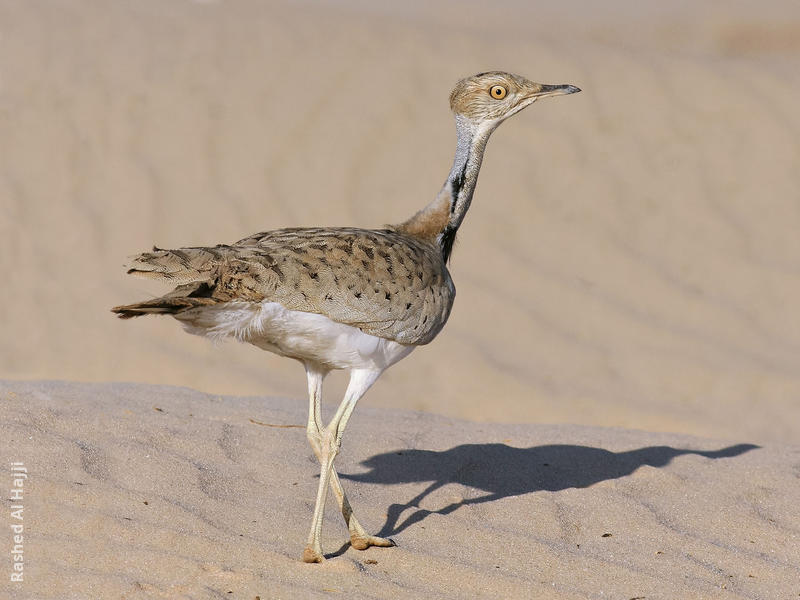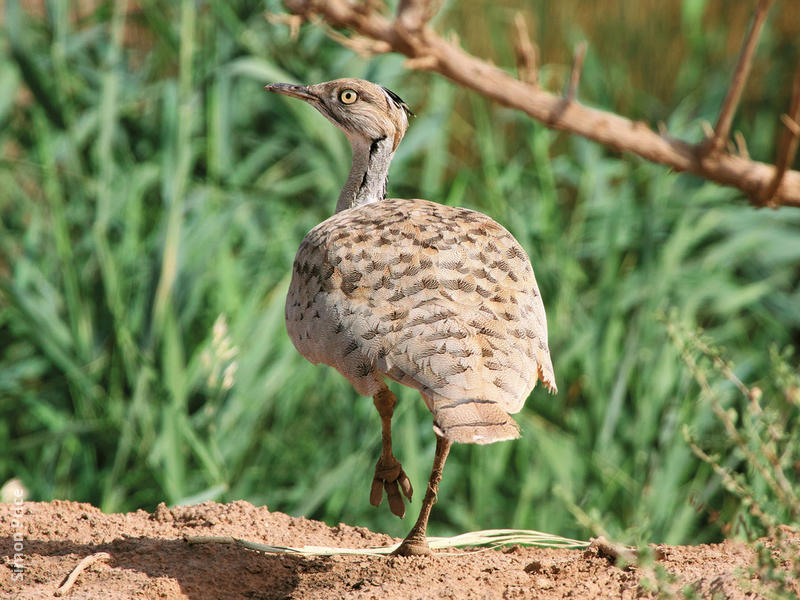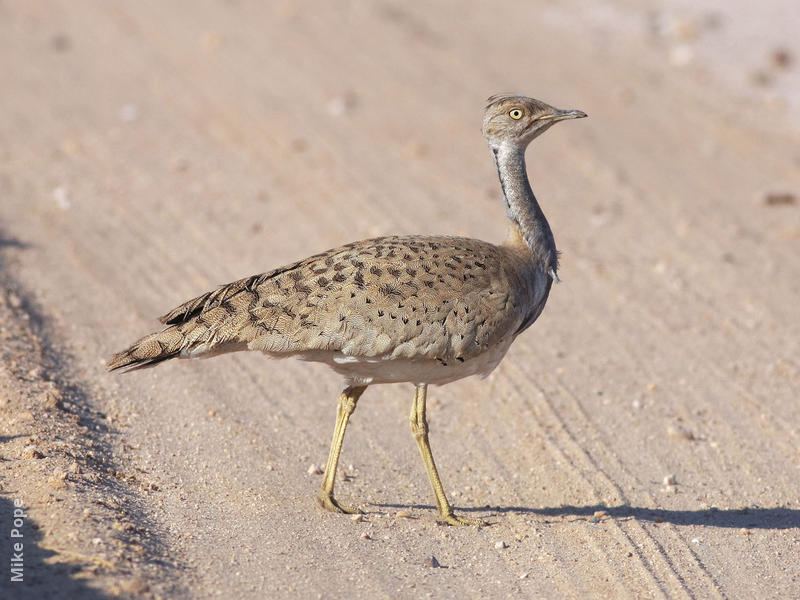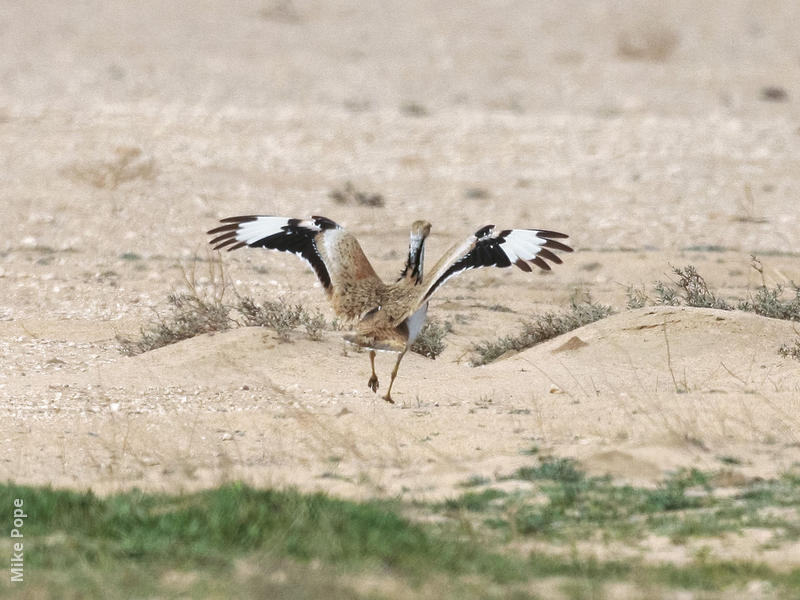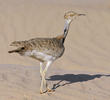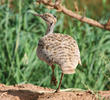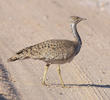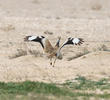- ‹ previous
- 94 of 415
- next ›
Scientific Name
Chlamydotis macqueenii
Arabic Name
الحبارى الشرقية
Kuwaiti name
حبارى
Family
Information
Irregular winter visitor in very small numbers. Formerly a resident breeder that was fairly common up until the 1950’s. It has seen a dramatic population decline primarily due to overhunting across the region. The former Houbara Bustard was recently split into two species and Macqueen's Bustard is the species occurring in Kuwait.
Where in Kuwait
Predominantly in desert areas with scrub habitat and some coastal areas.
In the world
Race Macqueenii extends from Egypt east of the Nile through Israel, Jordan, Lebanon, Saudi Arabia, Yemen, Oman, U.A.E., Bahrain, Qatar, Kuwait, Syria, Iraq, Iran, Afghanistan, Pakistan, India, Armenia, Turkmenistan, Uzbekistan, Tajikistan, Kyrgyzstan, Kazakhstan, Russia and Mongolia to China. The species decline has now slowed as a result of increases in North Africa, driven by a captive breeding and release programme. It generally feeds alone or in small groups on beetles, ants, plants, and even small lizards.
Local threats
Classified as Vulnerable this is a highly prized species by both shooters and falconers alike that is relentlessly and unsustainably persecuted along its migratory route. Large numbers of Houbara Bustard are trapped, mainly in Pakistan and Iran, and shipped to Arabia for use in training falcons to hunt.


